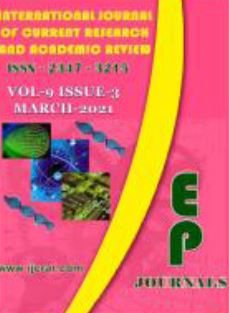Abstract Volume:9 Issue-3 Year-2021 Original Research Articles
 |
Online ISSN : 2347 - 3215 Issues : 12 per year Publisher : Excellent Publishers Email : editorijcret@gmail.com |
2Terca Project Center, Ethiopia
Soil erosion runoff is a global environmental problem influenced by both natural and human factors. Modeling provides a quantitative and consistent approach to estimate soil erosion, runoff and sediment yield under a wide range of conditions, and is needed to guide the comprehensive control of soil erosion and run off. Over the years various soil erosion models have been developed. The application of these models is dependent on the soil type and climate of the given area because models differ in complexity and input requirements. This review shows various soil erosion and run off models and their applications, focusing more on the most widely applied models different empirical and process-based models which are Universal Soil Loss Equation (USLE), Revised Universal Soil Loss Equation (RUSLE) and Water Erosion Prediction Project (WEPP), Ephemeral Gully Erosion Model (EGEM), Lumped Parameter Models (LPMs), Kineros Model, Rainfall-runoff modeling (Original SCS-CN model) and others. The results of this different stud shows that most soil erosion models have been developed for the assessment of rill and interill erosion at plot or catchment scale on agricultural lands and watersheds in terms of estimating mostly soil loss, sediment yield, erodibility (K)values, rainfall factor (R) factors, runoff rates and forecasts of likely impacts. Again, the study indicated that most previous authors on soil erosion assessment used the empirical models due to their limited data and parameter inputs.
How to cite this article:
Zenebe Reta and Temesgen Aklilu. 2021. Review on Soil Erosion and Runoff Models.Int.J.Curr.Res.Aca.Rev. 9(3): 13-22doi: https://doi.org/10.20546/ijcrar.2021.903.002



Quick Navigation
- Print Article
- Full Text PDF
- How to Cite this Article
- on Google
- on Google Scholor
- Citation Alert By Google Scholar
